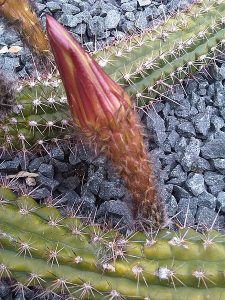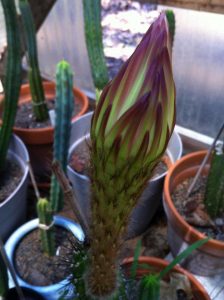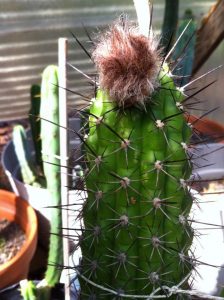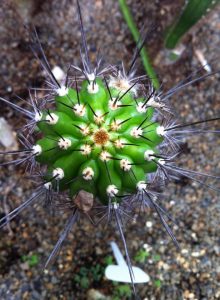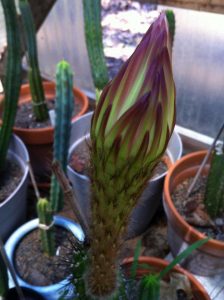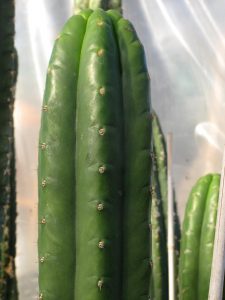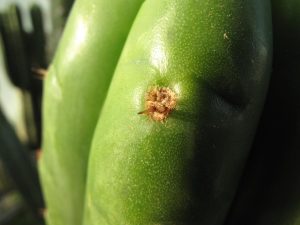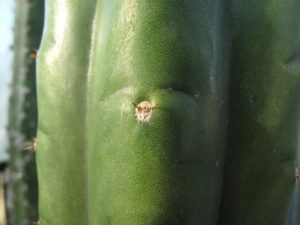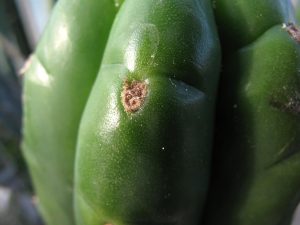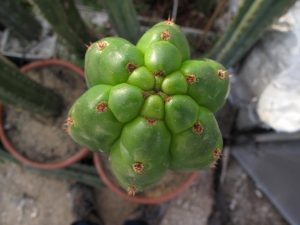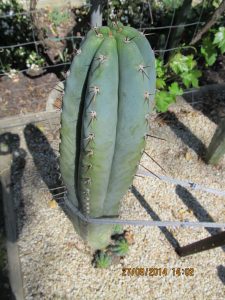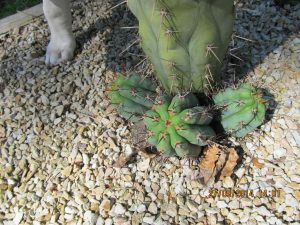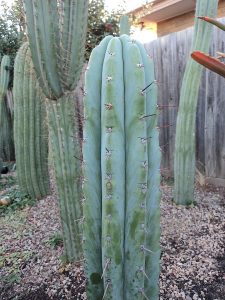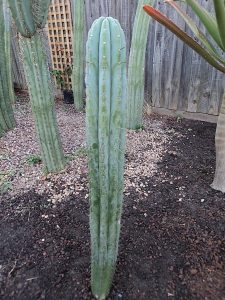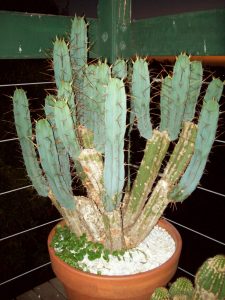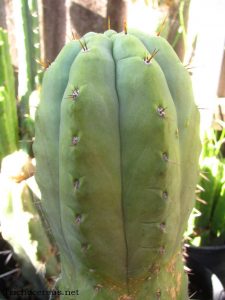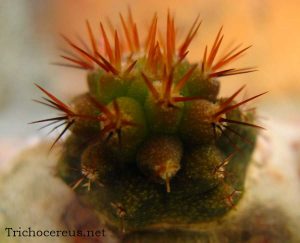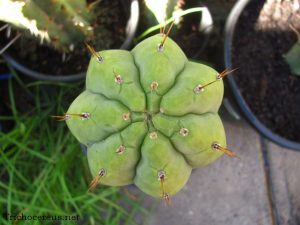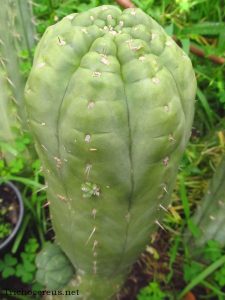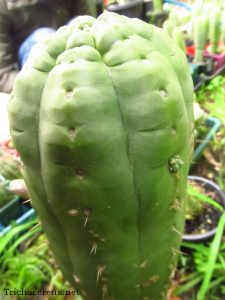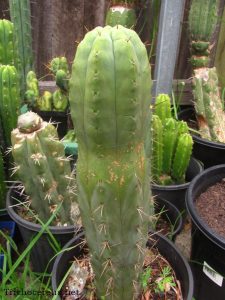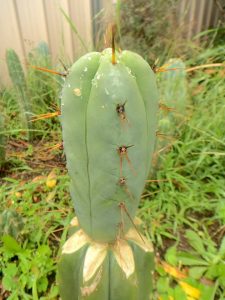Trichocereus thelegonus / Echinopsis thelegona Friedrich & Rowley
Pic: Noah Reams
Origin: Argentina, Tucumán, Salta, 5500-1100 meters altitude
Synonyms: Trichocereus thelegona, Trichocereus thelegonus, Echinopsis thelegonus, Echinopsis thelegona, Cereus thelegona, Cereus thelegonus
Trichocereus thelegonus is a branchy & creeping cactus that only produces a handful of shoots. It can reach a maximal height of approximately 2.2 meters and can get up to 10 centimeters in diameter. But that´s only the case on very old plants and most of them get 6 – 8 cm in diameter. The plant has 12-13 ribs and is characterized by its very dominant areoles that sit in top of some extremely hexagonal warts. It´s look is very typical and once you got used to the plant, it´s very hard to overlook or misidentify it.
Trichocerus thelegonus has rounded areoles and yellow to dark/brown spines. There also are regional types that rather have a reddish spine color instead of the brown one. Old growth tends to change its color to a more blackish tone, similar to how it can be observed on Trichocereus cuzcoensis. That said, both are really not very similar and this interesting plant from Argentina rather resembles a hanging basket cactus, than a classic columnar. Tr. thelegonus / Echinopsis thelegona usually has one and, in some very rare cases, two middle spines and between 5-8 radial spines that can reach up to 2,5 centimeters in length.
FLOWER: Trichocereus thelegonus is a night flowering species, with flowers than can stay open until the early morning. The flower is white and gets up to 22 centimeters long and I measured a staggering 17 centimeters in diameter.
Apart from the size, the flower is very beautiful and has a wonderful scent!
Fruits: The fruits of Trichocereus thelegonus are round and have reddish brown hairs. The fruits are reddish and can reach 6 centimeters in diameter. It does not produce as many seeds as other plants from the same genus. Trichocereus thelegonus / Echinopsis thelegona is self-sterile and it needs pollen from other plants to produce seed.
Crested or Monstrose type: There also is a crested clone of this plant that is extremely cool and resembles a monstrose Cereus. I´ve been lookingf or this crest for years, but wasn´t able to find one yet. Luckily, there are some pics from a Botanical garden:
Buy seeds or cuttings of Trichocereus thelegonus: This type is kinda rare, but I sometimes get viable seeds of Trichocereus thelegonus. The problem isn´t that there aren´t any seeds available; but most of the ones that were, did not germinate. I am working on putting the type in my shop and if you want to be up to date about my fresh seeds, please subscribe to my newsletter at: trichocereus.net/newsletter.
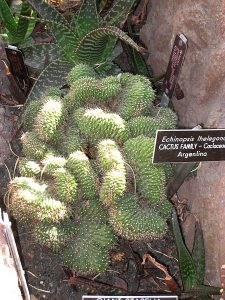

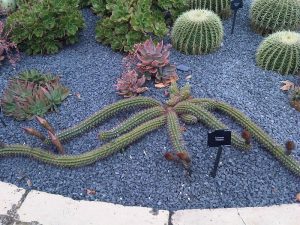
bernard loison Echinopsis_thelegona
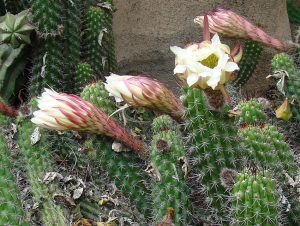
Pics: Noah Reams
Trichocereus thelegonus / Echinopsis thelegona Friedrich & Rowley


